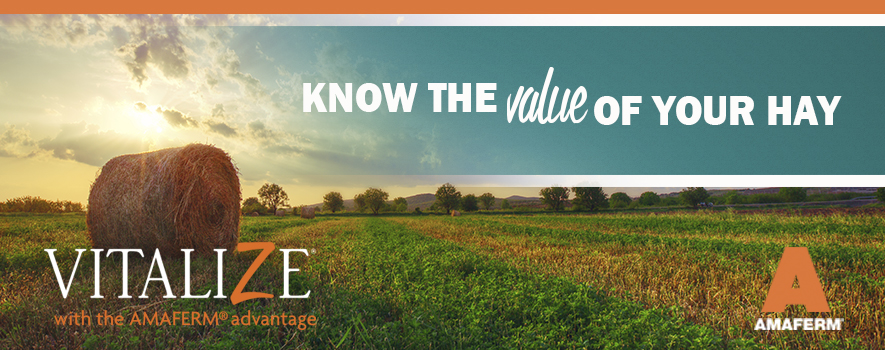By Lindsey Grimes, VitaFerm® Nutrition Support Coordinator
Knowing the nutrient value of your hay is one of the easiest ways to ensure your horse is meeting your performance expectations without wasting expensive nutrients or supplements. Taking hay samples is an easy and efficient way to determine the complete nutrient value, and our company offers free hay testing services to help ensure your nutritional program will help you maximize your horse’s performance. Here’s how you can get started:
There are two ways you can take hay samples: with a hay probe or by hand. Regardless of the technique used, the sample should be representative of the entire lot. This means that you should sub-sample around 10% of the total bales in the lot from a minimum of 10 corings and/or hand grabs.
What do I need to take a hay sample?
The tools needed for samples collected with a hay probe are a cordless drill, the hay probe, a permanent marker, a 1-gallon re-sealable plastic bag and a clean 5-gallon bucket. If taking hand grab samples, you will only need a permanent marker, a 1-gallon re-sealable plastic bag and a 5-gallon bucket.
How to take a proper hay sample?
- Select random bales throughout the lot you wish to sample.
- Obtain a sample from as far inside the bale as possible.
- Sampling with hay probe– Reach as far as possible inside the bale with your coring tool. This can be more difficult when bales are wet or when the hay is very mature. In those cases, a spare battery for the drill is helpful to have on hand, especially if a large number of bales are to be probed.
- Sampling by hand– It helps to use the short pipe to pry open the bale. The goal is to reach inside with your hand open and grasp tightly a handful of hay material. You want to try to not strip the leaves off when you do the grabbing, so many small handfuls are better than one large handful.
- Place each sample from bale into a 5-gallon bucket.
- Repeat steps 2 and 3 until you have at least 10 samples from 10% of the bales in the lot you are testing. All samples will be placed into the same 5 gallon bucket.
- After sampling the desired number of bales, the entire sample should be pulled apart and mixed thoroughly. You cannot rely on the lab to mix your sample, so you must do it.
- Next, dump sample into the re-sealable plastic bag and remove any excess air. It is fine if the bag is not completely full, but you will need approximately ½ a quart of material in the bag.
- The sample will give you these Forage Analysis Components:
- DM (Dry Matter)
- CP (Crude Protein)
- NDF and ADF (Neutral and Acid Detergent Fiber)
- TDN (Total Digestible Nutrients)
- Net Energy
- Minerals
- Vitamins
How can Amaferm® work to improve hay?
When forage quality is impacted by external factors such as maturity, harvest and storage techniques, or environment, the feed additive Amaferm, found in all Vitalize® products, can be used to improve forage digestibility. Amaferm is a prebiotic used to stimulate the enzyme activity and growth of beneficial microorganisms that already exist within the digestive tract. This natural feed additive maximizes the energy value of feed by improving digestibility through increased fungal branching, more microbial enzyme activity, and faster bacterial growth. Furthermore, incorporating Amaferm into the diet also stabilizes the pH within the hindgut to minimize digestive upsets, strengthen the horse’s immune system, and improve body, hoof, and coat condition.


